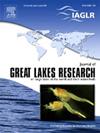Critical biodiversity, fisheries status and need for inshore fish communities conservation in Lake Tanganyika
Abstract
Lake Tanganyika is recognized for its unique rich fish biodiversity of high socio-ecological value, exceptional beauty, and the fact that it sustains one of the most important African inland fisheries. Most cichlid fishes are targeted by the inshore fisheries and have habitat preferences in the nearshore environment within different habitats along the coastline. Many human threats challenge these critical habitats and freshwater biodiversity could be on the decline. Here we document the extent of the fisheries pressures on the inshore fish communities in northwestern Lake Tanganyika, a highly changing area with respect to human population and protein needs. From field data and communities-based fisheries consultations, we noted the following: 1) there are very limited data available on the inshore fish diversity and the current status of fish stocks, 2) there are data deficiencies on the spatial distribution and current levels of exploitation for a significant proportion of fish species (78%), though there is enough data to indicate that they are overexploited and caught while still immature, 3) resource users’ awareness and alternatives remain low, and many fish species are constantly threatened with local declines and habitat-loss due to unsustainable fishing practices, and 4) conservation actions of fishery resources are diminished due to the lack of long-lasting policy and updated fisheries legislation. Our findings suggest that fishing activities are widely destructive and no longer sustainable for the fishing communities. Therefore, we should initiate conservation programs and fisheries-related decision making based on scientific data that is contextual with communities and their fisheries awareness. We describe potential paths forward, and we give an overview of the inshore fisheries activities and species richness to encourage sustainable management measures at Lake Tanganyika to prevent this tragedy of the commons.

 求助内容:
求助内容: 应助结果提醒方式:
应助结果提醒方式:


